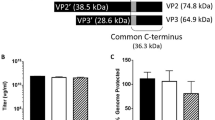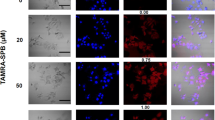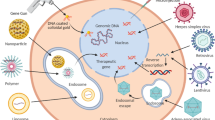Abstract
Radioimmunotherapy is limited by a variety of factors, including poor tumor penetration of monoclonal antibodies and low levels of intratumoral antigen expression. To address these limitations, a gene therapy strategy was devised to genetically induce tumor cells to express enhanced levels of membrane receptors with high affinity for a radiolabeled peptide. We designated this approach as genetic radioisotope targeting strategy. To this end, an adenoviral vector (AdCMVGRPr) encoding the murine gastrin-releasing peptide receptor (GRPr) was used to achieve a high level of binding of radiolabeled bombesin (BBN). To achieve genetic induction of membrane GRPr specifically to tumor cells, we constructed two adenoviral vectors encoding the GRPr gene under the control of the tumor-specific regulatory elements, DF3 (AdDF3GRPr) or erbB-2 (AderbGRPr). We investigated the binding of [125I]BBN to the GRPr following infection with AdDF3GRPr and AderbGRPr in a panel of human breast, pancreatic, and cholangiocarcinoma tumor cell lines. [125I]BBN binding and GRPr expression increased with increasing multiplicities of infection of AdCMVGRPr in all of the cell lines tested. Breast cancer cell lines expressing erbB-2 showed significant GRPr expression using AderbGRPr. A similar result was observed in breast and cholangiocarcinoma cells infected with AdDF3GRPr expressing MUC1 as detected by immunohistochemistry but was not seen in the pancreatic cell lines tested. Thus, adenoviral vectors with tissue-specific promoter elements can be used to achieve a selective expression of membrane receptors that can be targeted with a radiolabeled peptide. The use of such a transcriptional targeting approach may restrict gene expression to tumors and limit the radiation dose deposited in normal tissues in vivo.
This is a preview of subscription content, access via your institution
Access options
Subscribe to this journal
Receive 12 print issues and online access
$259.00 per year
only $21.58 per issue
Buy this article
- Purchase on Springer Link
- Instant access to full article PDF
Prices may be subject to local taxes which are calculated during checkout
Similar content being viewed by others
Author information
Authors and Affiliations
Corresponding author
Rights and permissions
About this article
Cite this article
Stackhouse, M., Buchsbaum, D., Kancharla, S. et al. Specific membrane receptor gene expression targeted with radiolabeled peptide employing the erbB-2 and DF3 promoter elements in adenoviral vectors. Cancer Gene Ther 6, 209–219 (1999). https://doi.org/10.1038/sj.cgt.7700049
Received:
Accepted:
Published:
Issue Date:
DOI: https://doi.org/10.1038/sj.cgt.7700049
Keywords
This article is cited by
-
Update on HER-2 as a target for cancer therapy: The ERBB2 promoter and its exploitation for cancer treatment
Breast Cancer Research (2001)



